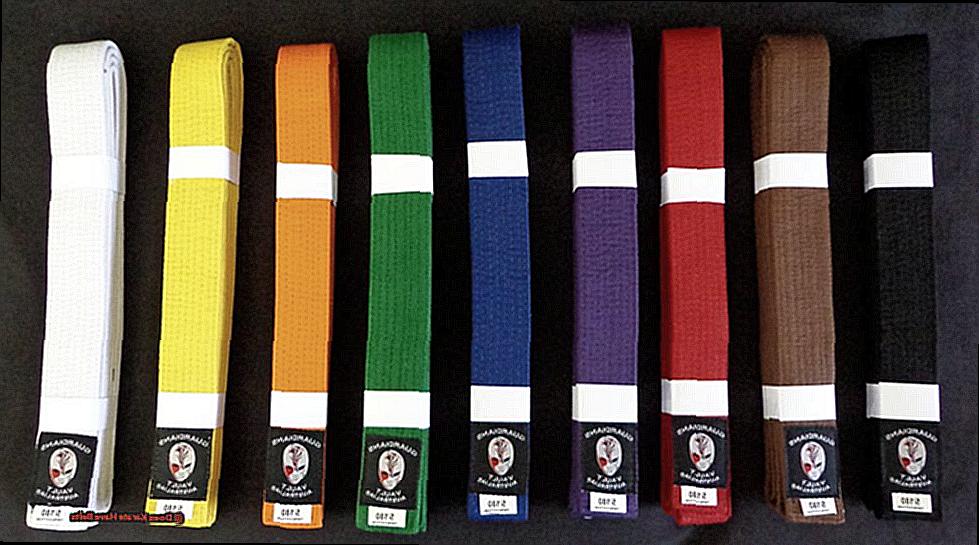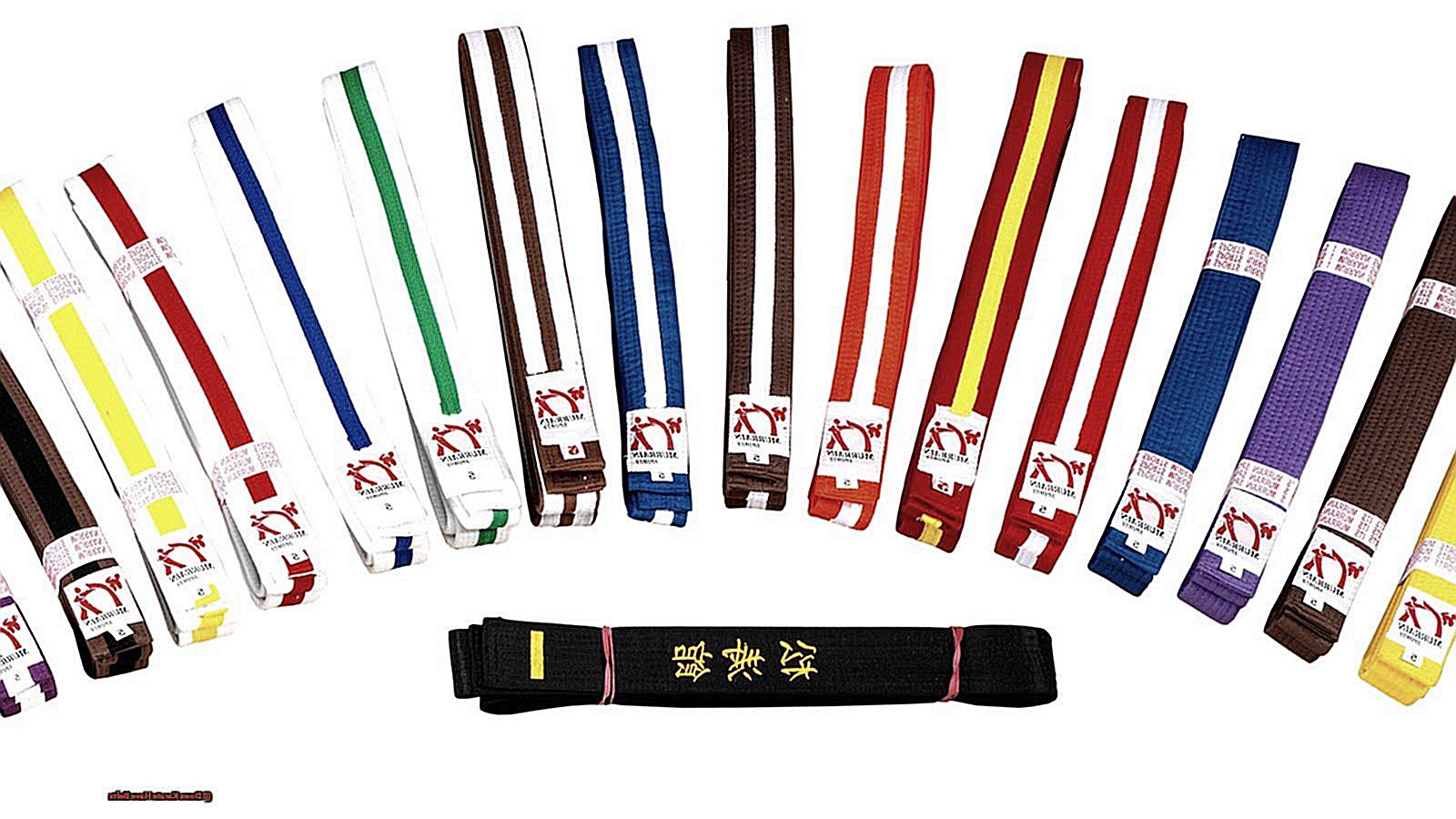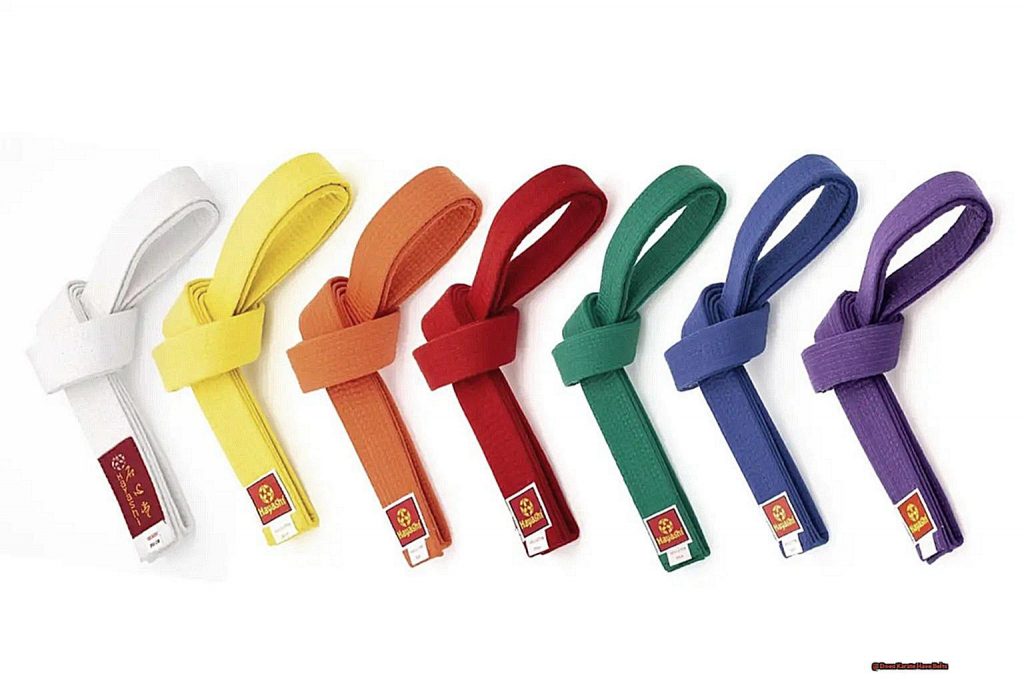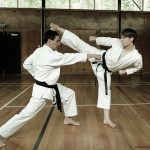Karate, a timeless martial art that has captivated people around the globe for centuries.
Its precise movements, powerful strikes, and disciplined mindset have made it a sought-after form of self-defense and physical fitness. But what truly sets karate apart from other martial arts is its unique use of belts to signify rank and progress.
These vibrant colored belts not only add a splash of color to the traditional white gi, but they also serve as a visual representation of an individual’s dedication and skill in the art of karate. In this blog post, we will delve into the significance of belts in karate and how they play an integral role in the journey of every practitioner.
So go ahead and grab your favorite cup of tea (or perhaps some green tea for that extra boost) as we embark on a fascinating exploration into the world of karate belts.
Origins of Belts in Martial Arts
The origins of belts in martial arts can be traced back to Japan in the late 1800s, when Jigoro Kano, the founder of judo, introduced a ranking system to differentiate the varying levels of proficiency among students. This system spread throughout various styles and schools around the world by the early 1900s.
However, the use of belts as a means of ranking and advancement in martial arts is a relatively modern concept. In fact, the earliest form of ranking in martial arts can be traced back to the 8th century and was referred to as Menkyo, which translates to “license.” This system was utilized to certify students who had mastered specific techniques and were deemed capable enough to teach others.
As time progressed, the use of belts became more widespread and standardized, with each color representing a different level of experience and progress. Currently, most martial arts employ a system consisting of 9 belt colors: white, yellow, orange, green, blue, purple, brown, black (and sometimes red). Typically, the first belt is white while the highest rank is black. However, it may take several years of dedication and training to reach this level.
Each belt color holds a specific meaning and indicates a student’s level of experience and progress. For instance, white represents purity and innocence while black symbolizes mastery and perfection. Certain martial arts also have their own unique ranking systems based on animals or colors.
Although black belt is widely recognized as the highest rank in most martial arts, some styles may reserve this rank for exceptional masters while others may have additional levels beyond the first dan black belt. Renowned martial artists such as Bruce Lee did not utilize belts as they were not part of their style’s tradition.

The Belt System in Karate
The ranking system used in karate holds both practical and symbolic value. It serves as a means to gauge students’ growth and proficiency level. As they progress through the ranks, they gain new skills, knowledge, and physical capabilities. Each belt color represents a different level of expertise, starting with white for beginners and advancing to black for highly skilled practitioners.
Symbolically, the belt system embodies the journey of a martial artist. In traditional Japanese culture, the white belt symbolizes purity and innocence, while the black belt signifies mastery and wisdom. The progression through various colored belts signifies the student’s development in both physical and mental aspects of karate.
The karate belt system operates by following a set curriculum and testing procedure. Students must demonstrate their proficiency in various techniques, forms, and sparring skills to advance to the next level. Higher-ranked instructors or masters typically conduct the tests to ensure fairness and consistency.
The table below outlines the general karate belt ranking system:
| Belt Color | Rank | Significance |
| White | 10th Kyu – 9th Kyu | Beginner level, symbolizes purity and innocence |
| Yellow | 8th Kyu – 7th Kyu | Basic level, symbolizes the sun rising and the start of a new journey |
| Orange | 6th Kyu – 5th Kyu | Intermediate level, symbolizes midday sun and the student’s growth in strength and knowledge |
| Green | Advanced level, symbolizes the growth of a plant and the student’s continued development in karate | |
| Blue | 2nd Kyu – 1st Kyu | Expert level, symbolizes the vast sky and the student’s extensive knowledge and skill in karate |
| Black | 1st Dan – 10th Dan | Highest rank, symbolizes mastery and wisdom in karate |
So, the belt system in karate holds both practical and symbolic significance in evaluating a student’s progress and representing their journey as a martial artist.
How to Achieve a Higher Rank in Karate?
Achieving a higher rank in karate requires dedication, hard work, and a continuous drive for improvement. Here are some effective strategies to help you reach your goal:
Consistent Training
Make it a priority to attend classes regularly and practice techniques consistently. This will help build muscle memory, perfect techniques, and develop endurance.
Embrace Growth Mindset
Progress in karate is only possible with a growth mindset, where mistakes are seen as an opportunity to learn and improve. Accepting constructive criticism and using it to better oneself can lead to significant progress.
Lay a Strong Foundation
Regularly practicing the basics is crucial for building a strong foundation of technique. This will provide a solid base for more advanced techniques to be built upon.
Maintain Physical Fitness
Karate requires a combination of strength, endurance, and flexibility. Engaging in strength training, cardio workouts, and stretching can improve overall physical fitness and aid in skill development.
Seek Knowledge
Attend seminars, workshops, and learn from experienced instructors to continuously expand your knowledge and skills.
Utilize Visualization Techniques
Mental preparation is just as important as physical training in karate. Visualizing techniques and scenarios can build confidence and prepare you for challenges.
Set Realistic Goals

Setting achievable goals and celebrating milestones is essential for tracking progress and staying motivated.
Surround Yourself with Support
A supportive community of fellow practitioners can provide encouragement, motivation, and accountability.
Cross-Train
Exploring other martial arts disciplines can bring new perspectives and enhance skills.
Prioritize Mental and Emotional Well-being
Karate training can be physically and mentally demanding. Practicing mindfulness, meditation, and deep breathing techniques can help maintain emotional balance.
Demonstrate Proficiency
In order to advance in rank, students must demonstrate proficiency in required techniques during tests.
Practice Discipline and Respect
Consistently attending classes, showing dedication and discipline, and demonstrating respect towards instructors, fellow practitioners, and the art itself is crucial for advancement.
Give Back
Volunteering for events or assisting lower-ranked students is a great way to give back to the martial arts community and show dedication to the art.
These effective strategies will help you achieve a higher rank in karate. Remember to stay dedicated, embrace a growth mindset, and always strive for improvement.
Karate Belt Order: Colors Ranked
Karate, like many other forms of martial arts, follows a specific and traditional ranking system to signify a practitioner’s level of skill and experience. This system is an integral part of the practice, representing progress and proficiency.
The belt colors in karate are typically white, yellow, orange, green, blue, purple, brown, and black. Each color holds its own meaning and symbolizes a different level of expertise and dedication to the art. The order of belt colors is as follows:
- White Belt: This is where all beginners in karate start their journey. It represents purity, innocence, and the willingness to learn and grow.
- Yellow Belt: Once a student has achieved the white belt, they progress to the yellow belt. This signifies that they have grasped the fundamentals of karate and are now ready to move on to more advanced techniques.
- Orange Belt: As a student continues to improve their skills, they are awarded the orange belt. This color represents growth and development in their journey towards becoming an intermediate practitioner.
- Green Belt: The green belt marks a significant milestone for practitioners as they are no longer beginners but not yet experts. They have mastered many techniques and are now ready for more challenging training.
- Blue Belt: As a practitioner becomes more proficient and confident in their skills, they are awarded the blue belt. This signifies that they have reached a higher level of understanding and commitment to their practice.
- Purple Belt: Often seen as the final step towards mastery for intermediate practitioners, the purple belt represents a deeper understanding of karate and readiness for advanced training.
- Brown Belt: The brown belt signifies that a practitioner has almost reached the highest level of proficiency. They have mastered many techniques and are now considered experts in their own right.
- Black Belt: The black belt is considered the ultimate goal for many karate practitioners, representing mastery, dedication, and perseverance. It takes years of hard work and commitment to achieve this rank.
In conclusion, the traditional belt order in karate holds great significance, representing a practitioner’s progress and expertise. Each belt color carries its own meaning and symbolizes the journey towards becoming a master in the art of karate. It is important to remember that the belt is not just a physical object but a representation of the dedication, hard work, and growth that a practitioner has put into their practice.
Black Belt Dan Degrees
Black Belt Dan Degrees are the highest ranks in the karate ranking system, representing a deep understanding and mastery of the martial art. These advanced ranks are earned through hard work, dedication, and demonstrating proficiency in technical and tactical skills during rigorous examinations.
The term “dan” comes from Japanese and means degree or level. It is used to signify the advanced levels of mastery in many martial arts, including karate. Black Belt Dan Degrees are usually divided into 10 levels, each representing a higher degree of expertise and knowledge.
One of the main significances of Black Belt Dan Degrees in karate is its indication of a high level of mastery and competence in the art. To achieve these degrees, practitioners must demonstrate exceptional technical skills, physical strength, and mental discipline. As they progress through each level, they also gain a deeper understanding of the philosophy and principles behind the martial art.
Earning Black Belt Dan Degrees also requires dedication and commitment to continuous improvement. These ranks cannot be attained quickly or easily. On average, it takes years of training and practice to even reach the first degree black belt. This emphasizes that earning these degrees is not solely about physical ability but also about developing patience, perseverance, and determination.
The process of earning Black Belt Dan Degrees involves regular testing and examinations. These exams aim to evaluate a practitioner’s knowledge and proficiency in various aspects of the martial art, such as katas (forms), sparring, self-defense techniques, and more. While requirements may vary between different styles of karate, they all assess an individual’s overall ability and understanding.
In conclusion, Black Belt Dan Degrees hold immense significance in karate as they represent a high level of mastery and dedication to the martial art. They are achieved through years of hard work, commitment, and demonstrating proficiency in various skills during challenging examinations. Reaching these advanced ranks is a testament to one’s personal growth and development in the art of karate.
| Level | Degree | Significance |
| 1st Dan | Shodan | First level of black belt, beginning of advanced ranks |
| 2nd Dan | Nidan | Second level of black belt, further development and understanding of techniques and principles |
| 3rd Dan | Sandan | Third level of black belt, mastery of basic techniques and deeper understanding of philosophy |
| 4th Dan | Yondan | Fourth level of black belt, expert level with advanced technique and application knowledge |
| 5th Dan | Godan |
Conclusion
In conclusion, the use of belts in karate serves both practical and symbolic purposes, acting as a measure of a student’s progress and representing their journey as a martial artist.
From its origins in Japan to its modern-day standardized system, the color order of belts in karate holds deep significance, reflecting a practitioner’s dedication, growth, and mastery of the art. Advancing through higher ranks requires consistent training, embracing a growth mindset, and maintaining physical and mental well-being.
The coveted Black Belt Dan Degrees are the ultimate goal for many practitioners, symbolizing the highest level of expertise and commitment to the art. However, achieving these degrees is not just about physical ability but also about developing patience, perseverance, and determination.
The journey towards earning these advanced ranks is a true testament to personal growth and development within the timeless art of karate.






